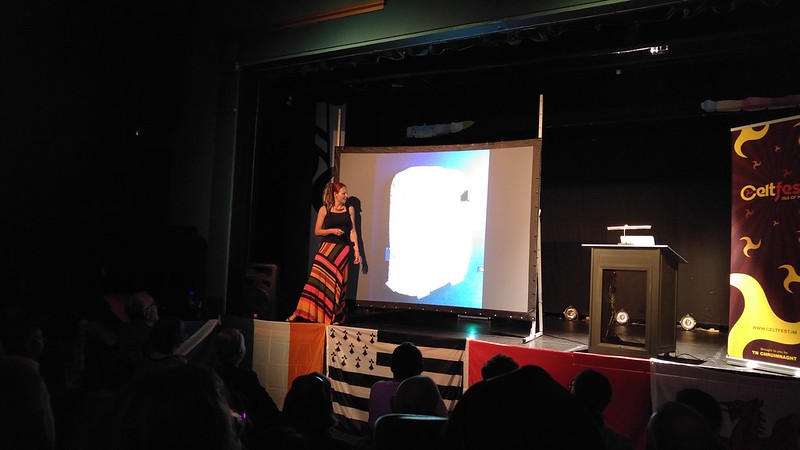This week I am in the Isle of Man for the CeltFest, a festival of Manx and Celtic music and culture. There are lunchtime concerts every day at the Noa bakehouse in Douglas, and concerts and other events every night in Peel.
Last night I went to a fascinating talk by Alice Roberts, an anatomist, anthropologist and broadcaster, about the history of the Celtic people and languages.
One popular theory is that the Celtic people originated from the Urnfield culture of central Europe during the Late Bronze Age (about 1,200 BC) and spread to many other parts of Europe after that.
The Romans and Greek talk about Celtic people inhabiting parts of Gaul (France), Iberia (Spain and Portugal), northern Italy, Helvetica (Switzerland), Anatolia (Turkey), and parts of eastern Europe. However, no ancient writers mention Celtic people in the British Isles or Ireland. The Ancient Greek historian Herodotus, for example, tells us that “the Celts live beyond the Pillars of Heracles, being neighbors of the Cynesii, who are the westernmost of all the peoples inhabiting Europe.” [source].
The people who spoke Celtic languages in the British Isles, Ireland and Brittany didn’t refer to themselves as Celts before the 18th century. It was Edward Lhuyd (1660-1709) who first used the word Celt in print in 1707 to refer to people who spoke Celtic languages. Before then they were just Welsh, Irish, Scottish, etc [source].
Professor Roberts told us that there is no evidence for large-scale movement of people in Europe during the Iron Age, the time when the Celts were thought to have spread from central Europe. People did move around, taking goods, ideas and technology with them, but not in large enough numbers to show up in the archaeological record.
There is, however, evidence for significant movements of people associated with the Bell-Beaker culture out of the Pontic-Caspian Steppe of central Asia into Europe from about 2,900 BC.
During the Bronze Age, people migrated into Europe from central Asia, bringing their Proto-Indo-European (PIE) language and culture with them. The people already in Europe, apart from the Basques, adopted the new culture and language. Over time the Indo-European languages developed from PIE. The Celtic languages developed mainly in western Europe. They disappeared from continental Europe, apart from in Brittany, after the 6th century AD, and continue to be spoken in parts of the British Isles and Ireland. At least that is my understanding of last night’s talk.
The earliest known inscriptions in a Celtic language date from the 6th century BC and were found in southern Portugal. They are written in an alphabet known as the Southwestern Script, and the language is referred to as Tartessian or South Lusitanian. Professor Roberts suggested that this script developed from the Phoenician script, independently of alphabets elsewhere in Europe, and the Tartessians, or whatever they called themselves, came up with the idea of adding vowels.

Isn’t the nub of the matter the fact that similarities and close affinities in the worlds of material artefacts, social organization, mythology, and yes, even language do not necessarily map onto a single *ethnic* identity? The fact that you speak English as your first language and have done so since you learned it at your mother’s knee doesn’t of itself make you an Anglo-Saxon.
On another point, Basque may be the only *surviving* non-Indo-European language in mainland Europe south of Estonia (the Magyar tongue replaced Indo-European languages in central Europe much later) but another non-Indo-European language that survived well into recorded historical times is the Etruscan and related tongues spoken by the Romans’ next-door neighbours on the Italian peninsula (and all the way up to the area of present-day Switzerland).